Sikkim, nestled in the Eastern Himalayas, holds a remarkable collection of lakes primarily located in its northern and northwestern regions. These lakes, besides their striking landscapes, are deeply revered for their spiritual and cultural significance, as they feed tributaries that flow into the state’s key rivers, Tista and Rangit. According to the Naysol Text—a sacred Buddhist scripture— there are holy 109 lakes in Sikkim and all are believed to be the abodes of guardian spirits like Devas, Yakshas, Nagas, Nymphs, Demons, and Tantric deities, with names bestowed by pioneering Lamas in the 17th and 18th centuries. Although the Sikkim government officially recognized several sacred sites in 2001, many lakes remain unidentified due to their remote locations, and some now lie within the borders of Nepal and Tibet. Additionally, some lakes are known only by informal names given by local herders or military personnel, making it difficult to confirm the existence and identities of all the lakes.
Sikkim’s lakes, ranging from high-altitude glacial wonders to serene alpine water bodies, reflect the region’s diverse topography and many of them are the prime attractions in a tour package to Sikkim. At extreme elevations, icy blue glacial lakes are set against rugged, snow-capped peaks, creating awe-inspiring landscapes, while those at lower altitudes are nestled amid lush meadows and dense forests, offering tranquil, verdant settings. Their pristine clarity, coupled with dramatic surroundings, showcases Sikkim’s geological diversity and provides visitors with opportunities for adventure, exploration, and peaceful natural experiences.
Here, we will explore all the lakes in Sikkim, ranging from the popular to the lesser-known, from those yet to be discovered to the untouched. Alongside, we will provide practical information, including details on how to reach each lake, whether they are restricted or open to the public, and other essential tips for travelers.
1) Gurudongmar Lake
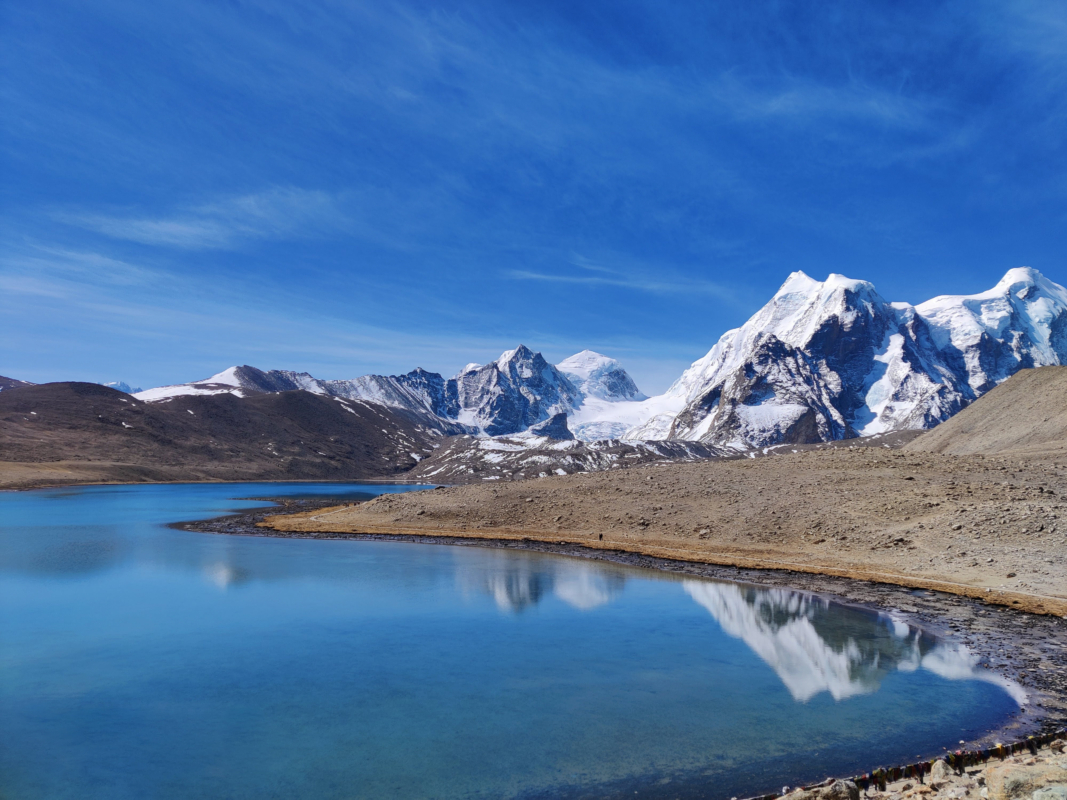
Embark on an unforgettable journey through the Darjeeling Sikkim mountain trails, where you’ll explore Sikkim’s mystical lakes, each steeped in culture and natural beauty, from glacial wonders to serene alpine gems.
At an altitude of 17,800 feet, Gurudongmar Lake is among the highest lakes in the world, renowned for its stark yet stunning landscape features barren cold desert mountains on one side and rocky snow-capped peaks like Kangchengyao (6889m) on the other, contrasting with the serene blue of the lake. Located in North Sikkim, about 70 km from Lachen, this glacial lake holds sacred significance for both Buddhists and Hindus, attracting visitors for its breathtaking beauty and spiritual value. The lake remains partially frozen throughout the year, enhancing its ethereal charm. Special permits are required for visitation due to its proximity to the international border.
2) Sebo Cho (Gora-La Lake)
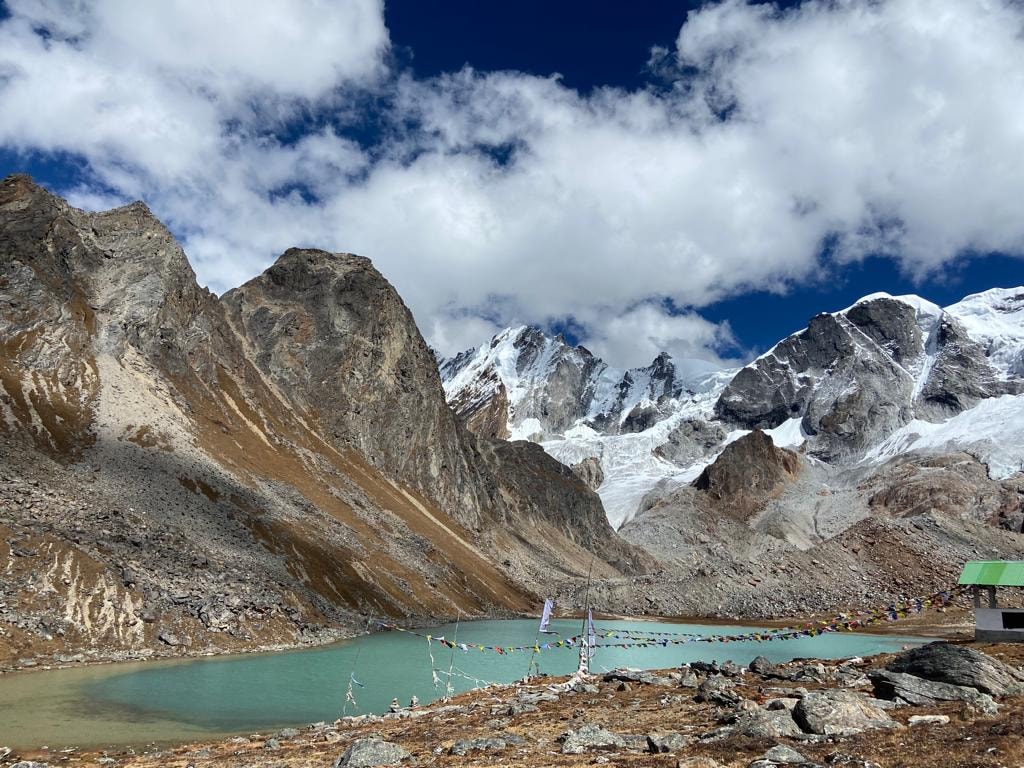
Accessed from Lachung’s Dombang Valley and situated against the backdrop of the expansive Rula Kang Glacier, Sebu or Sebo Cho (also known as Gora La Lake) is a hidden gem in North Sikkim, known for its breathtaking glacial landscapes. Despite being relatively unexplored, it is considered one of the most beautiful glacier lakes in the world. Sebu Cho is located at the base of Gora La, a pass that connects North Sikkim with Tibet’s Yadong County, and lies below the scenic Kangkyong Plateau, the largest high-altitude plateau in Sikkim.
This proglacial lake is the source of the Sebozung Chu or Sebu River, and is nestled in the alpine meadow of Sebu, about 65 km from the village of Lachung. The lake sits at around 4,800 meters and is primarily fed by the icefall from the lower sections of Chombu Mountain (6,363 meters). The meltwater from Sebu Cho also contributes to the Sebu Chu stream, which flows into the Lasha Chu Valley. Known for its pristine alpine ecosystem, the region offers excellent trekking opportunities, with the Sebu La Pass (5,352 meters) providing stunning views of surrounding peaks and glaciers
2) Lake Menmecho
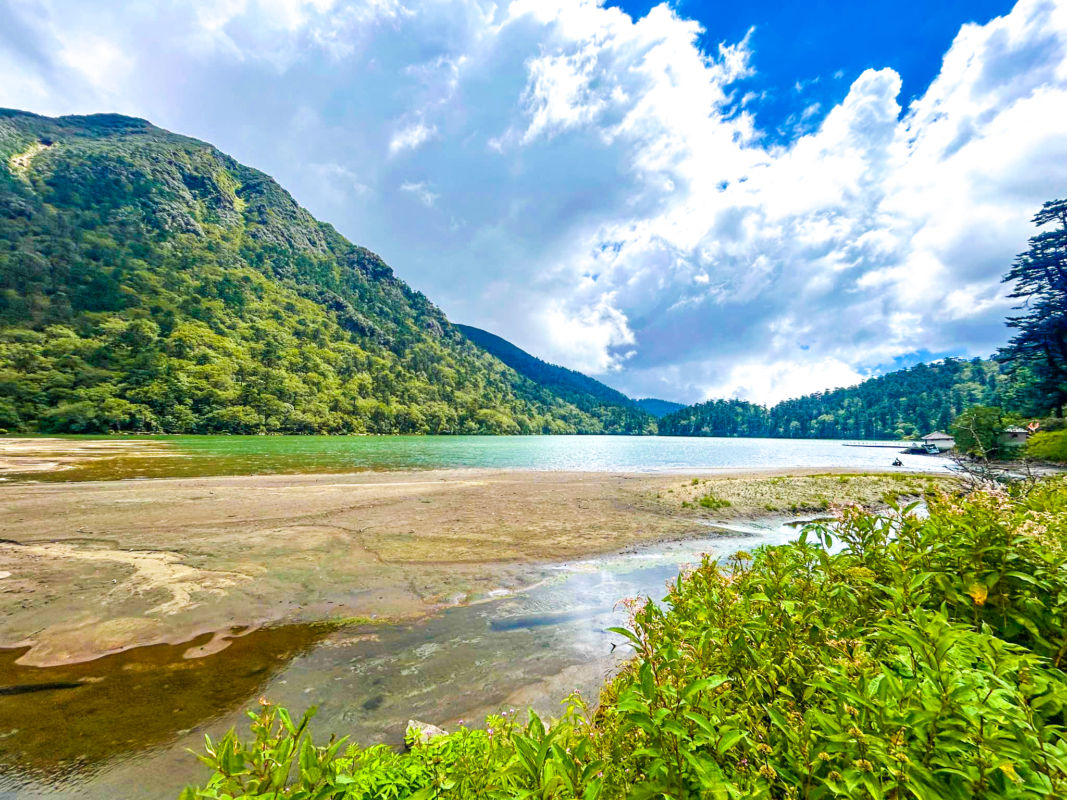
Menmecho Lake, an alpine lake in East Sikkim, is often praised as one of the most beautiful lakes in the region. Located at an altitude of 12,500 feet within the Pangolakha Wildlife Sanctuary, offers breathtaking views both from a distance and up close. The lake is accessible via a 4 km off-road drive or a moderate trek from the New Baba Mandir, with a four-wheel-drive vehicle necessary due to the rugged, boulder-strewn terrain. Surrounded by lush alpine meadows and dense forested hills, Menmecho Lake’s serene waters reflect the pristine natural beauty of the Himalayas. To visit Menmecho Lake, securing permission from the Fisheries and Forest Department of Sikkim is essential. For an immersive experience, including staying at the nearby bungalow, visitors must obtain this permission as well.
4) Tsomgo Lake (Changu Lake)
Tsomgo Lake, also known as Changu Lake, is a striking glacial lake located in East Sikkim at an altitude of 3,780 meters (12,400 feet). Renowned for its stunning natural beauty, the lake is surrounded by snow-capped peaks and lush alpine meadows, creating a picturesque landscape. Its waters change color with the seasons, ranging from deep blue in summer to a vibrant greenish hue in spring. The lake holds cultural significance for the local people, who believe it is sacred. Accessible via a scenic mountain road from Gangtok, Tsomgo Lake is a popular destination for visitors seeking breathtaking views and a serene environment.
5) Hangul Lake
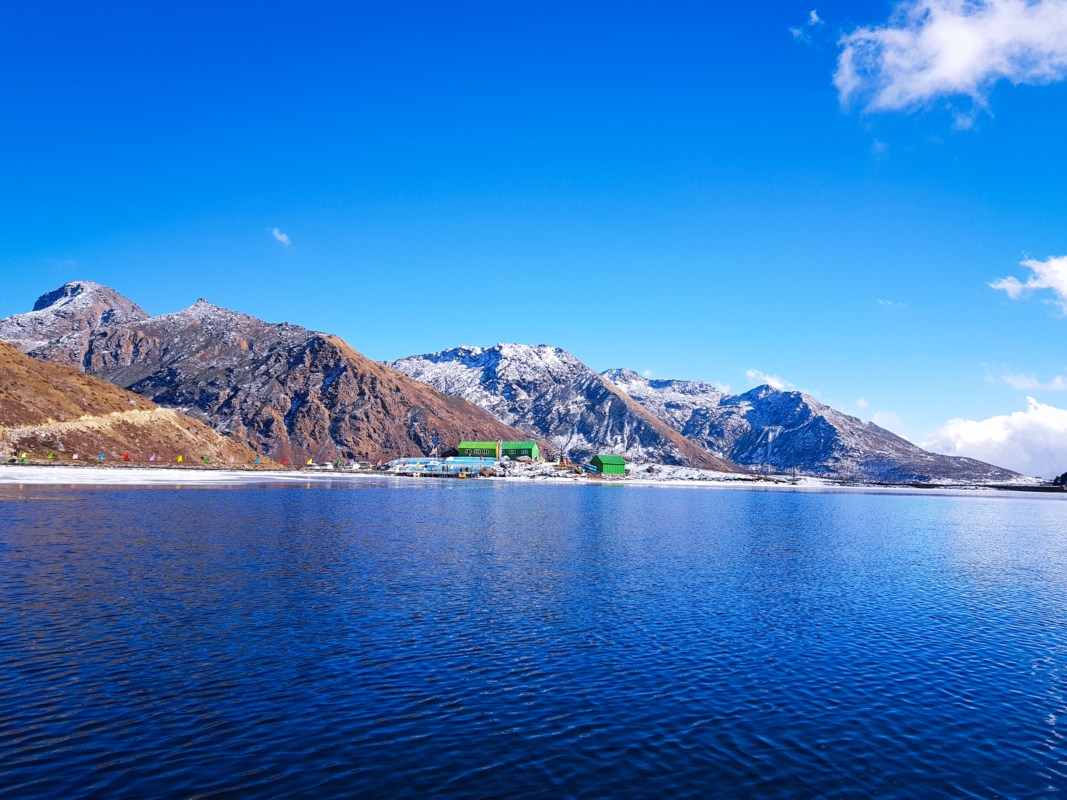
Hangul or Hangu Lake is recognized as the highest boating lake in Asia, situated at an elevation of 13,900 feet along the Nathula-Serathang-Old Baba Mandir-Zuluk Road in Sikkim, India. Positioned just after the turn-off to Nathang Valley from Serathang when coming from the Nathula side, the lake is named “Hangu,” which means “Duck” in the Sikkimese language. This name is fitting, as the lake attracts Golden Ducks (Rudy Shelduck) during the winter months from November to February.
Hangu Lake is located just above the well-known Changu Lake and offers stunning views that can be seen from the roadside before reaching the Baba Harbhajan Shrine. During the summer and autumn seasons, the lake is open for boating, though it is often frozen during the colder months, creating a unique and captivating landscape.
6) Sanglaphu Cho (Lake)
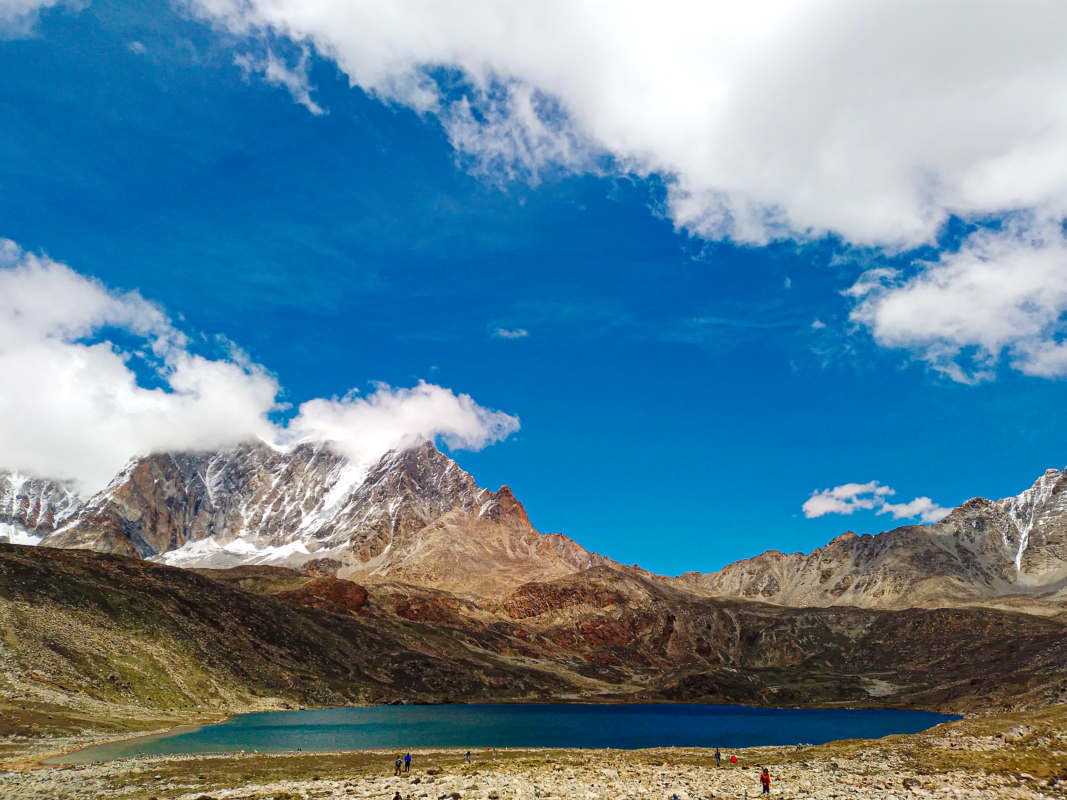
Sanglaphu Cho, situated at an altitude of about 5,080 meters (16,665 feet), is a pristine glacial lake located in Zadong, approximately 6 kilometers from Zero Point in Yumthang Valley. The lake, surrounded by an arid landscape with snow-capped mountains and the striking Sanglaphu Peak in the background, offers a mesmerizing setting. To reach the lake, visitors must walk down from the road to experience its breathtaking beauty. The lake features a unique cave-like structure with snowy peaks forming its walls, and its waters display two distinct colors, enhancing the scenic allure of this remote and serene location.
7) Kishong Tso (Kishyong Lake)
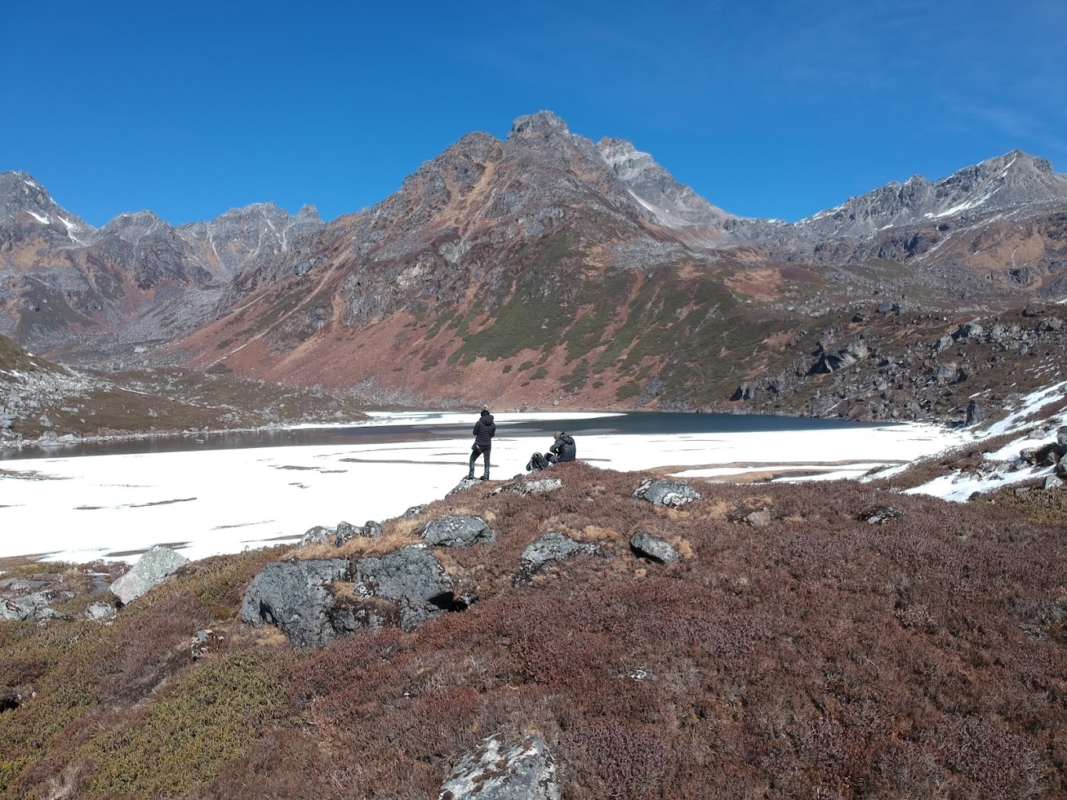
Kishyong Lake, also known as Kishong Tso, is a pristine and remote high-altitude glacier lake located within the Khangchendzonga National Park’s core zone in the Dzongu region, North Sikkim at an elevation of about 14,800 feet. This crystal-clear lake, situated beside Kishong La Pass, is surrounded by rugged mountainscape, forests of rhododendron, pine trees, and medicinal herbs, offering a picturesque and serene environment. The lake serves as the major source of the Ringpi Chu River, which eventually merges with the Rungyung Chu.
The trek to Kishong Lake is strenuous and challenging, making it an ultimate destination for adventure seekers. The trek passes through rich biodiversity, with sightings of yaks, blue sheep, and high-altitude birds. The lake lies in the Keushong Valley, which is renowned for its stunning views of the Kanchenjunga peaks and vibrant flora, including a variety of flowers that cover the valley in rich colors. The Lake also holds deep cultural significance for the Lepcha community, who believe that some of their clans originated from sacred lakes. It is also believed to be a route to heaven, enhancing its spiritual importance.
8) Bhale Pokhari & Doodh Pokhari
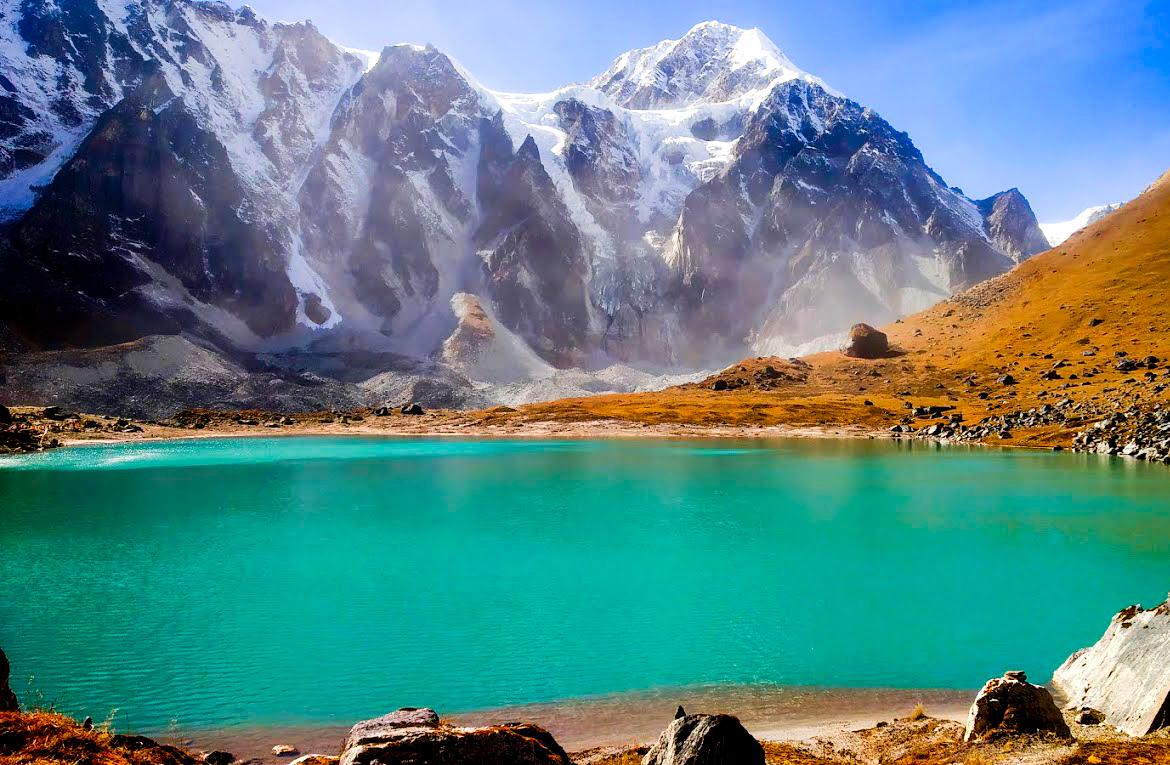
Bhale Pokhari is a sacred lake nestled at the foothills of Mount Kabru Dome, surrounded by towering, snow-clad peaks. This serene body of water is considered to be one of two holy twin lakes, with Bhaley Pokhri representing the male, while Doodh Pokhari, a smaller water body nearby, is regarded as the female counterpart. Both lakes hold religious significance and are revered by local communities. These lakes can be accessed through the route leading to the base camp of the Himalayan Mountaineering Institute, making them not only spiritually important but also a draw for adventurers exploring the high Himalayas.
9) Samiti Lake
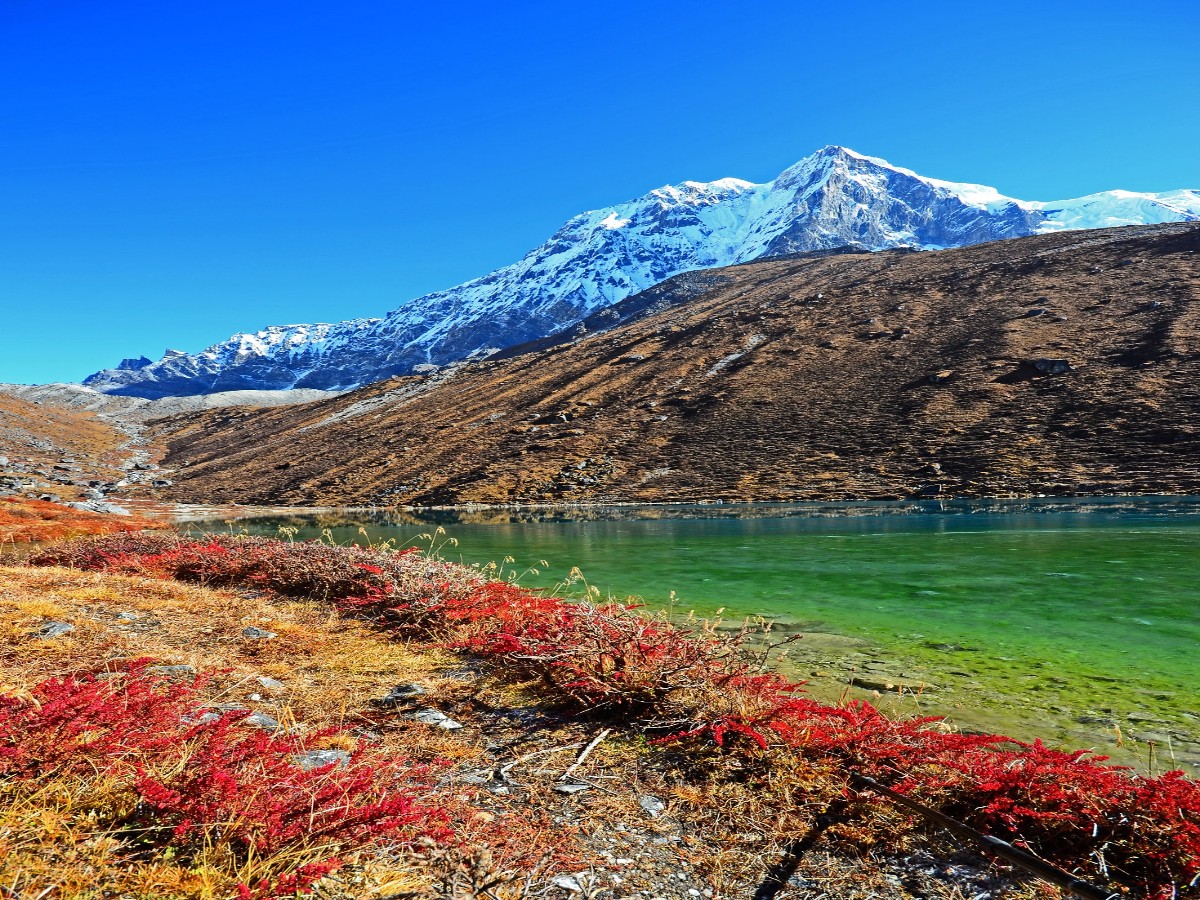
Nestled in the remote Goecha La Trek route, Samiti Lake is one of the most stunning high-altitude lakes in West Sikkim. Sitting at an elevation of around 4,200 meters (13,800 feet), the lake’s emerald green waters reflect the towering snow-capped peaks surrounding it, including the majestic Mount Pandim. As part of the trekking route to Goecha La, a high mountain pass with breathtaking views of Mount Kanchenjunga, Samiti Lake offers a peaceful and awe-inspiring respite for trekkers. The area around the lake is adorned with prayer flags, adding a spiritual essence to its already mesmerizing beauty. The trek to Samiti Lake requires a permit, and visitors are recommended to travel with local guides due to the challenging terrain.
10) Khecheopalri Lake
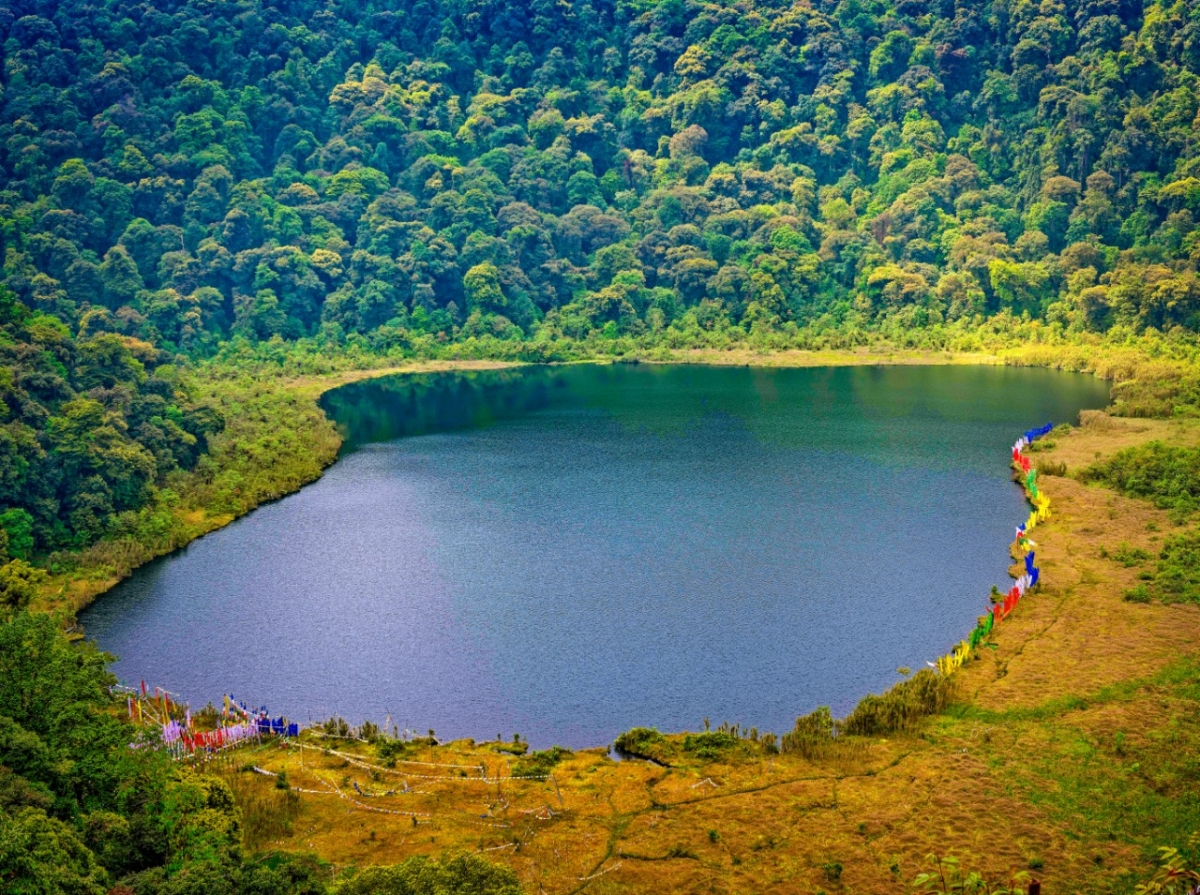
Khecheopalri Lake, located in West Sikkim, is considered one of the holiest lakes in the state, sacred to both Buddhists and Hindus. It is believed to fulfill the wishes of those who visit. The lake is surrounded by dense forests and is part of a larger sacred landscape, including monasteries and meditation caves. Unlike many of the high-altitude lakes, Khecheopalri is accessible without strenuous trekking, making it a popular pilgrimage site. The lake’s calm, mirror-like surface, reflecting the lush greenery around it, creates a serene atmosphere, and it is said that not a single leaf floats on its surface, as the birds pick them up immediately. Khecheopalri Lake is easily accessible from Pelling, a nearby town known for its panoramic views of the Himalayas.
11) Kupup Lake
Kupup Lake, also known as Phedang Tso, is a high-altitude lake located in East Sikkim at around 4,300 meters, near the Indo-China border. Together with the nearby Batang Cho Lake, it forms the Phedang Tso Wetland Complex, a crucial alpine ecosystem spread across 45 hectares. The lake’s unique elephant-like shape gives it the local name Elephant Lake. These lakes are vital water sources for the Jaldhaka River, which supplies the Jalkata Power Station in Bhutan, as well as for the local population and military personnel stationed in the region. In addition to their hydrological significance, the lakes support a diverse range of alpine flora and migratory birds, contributing to the region’s ecological and biodiversity value.
To reach Kupup Lake, you must travel along the Silk Route. The lake is located approximately 66 km from Gangtok and is accessible via a scenic yet challenging drive through winding mountain roads and sharp bends. The nearest major town is Zuluk, about 20 km away. Many tourists visit this area for its panoramic views, especially from the nearby Yak Golf Course, the highest golf course in the world. The best time to visit is from May to June when the weather is pleasant, and the surrounding valley is filled with blooming rhododendrons
These lakes not only represent the breathtaking natural beauty of Sikkim but also embody the cultural and spiritual heritage of the region, deeply tied to the beliefs of the local people. From high-altitude glacial lakes to serene pilgrimage sites, these water bodies are integral to understanding Sikkim’s unique connection to both nature and spirituality.

